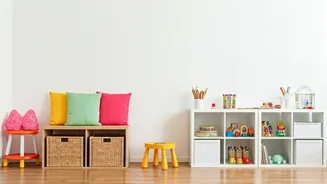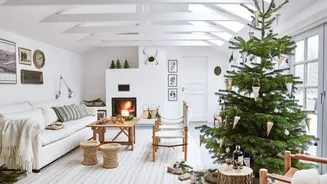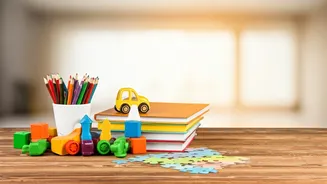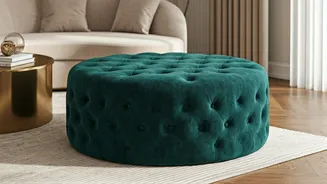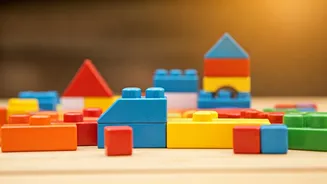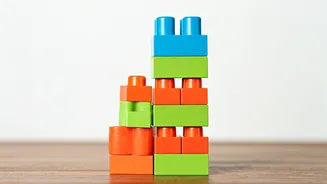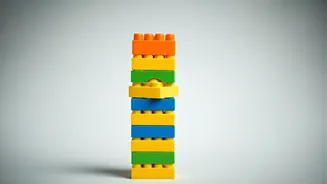Start With Planning
Before diving into any transformations, thoughtful planning is essential. Start by including your child in the decision-making process. Observe how they
play and what they like to do. What are their interests? What do they need? Involve them in brainstorming and sketching out the space. Consider the available area—a small corner, a spare bedroom, or a shared space. It's necessary to select furniture that is appropriately sized, and opt for multi-purpose items to maximize functionality. Ensure there is sufficient room for play, study, and storage. Consider the room’s lighting and ventilation as well to ensure a comfortable and healthy atmosphere. By establishing a plan, you can avoid unnecessary expenses, ensuring that you achieve the best outcome.
Smart Furniture Choices
Selecting the appropriate furniture is a fundamental step in creating a child-friendly space. Look for furniture that can adapt to the child’s growth. Adjustable desks and chairs are brilliant investments because they can be modified as your child grows, thus preventing the need for replacements. Embrace multi-functional furniture, like a bed with built-in storage or a desk that doubles as a crafting surface. Explore the world of second-hand furniture from local marketplaces. Pre-owned items can offer significant savings, and with a little creativity, you can refurbish them to fit your design. Consider the dimensions of your room and the amount of space available when choosing furniture. This will help you maximize the space and create a practical layout. Safety is critical, so always make certain that the furniture is secure and made of safe materials. Rounded edges and non-toxic paints are highly advised.
Color and Themes
Colors and themes dramatically influence a child's room ambiance. It's critical to involve your child in choosing the color scheme, as this can heighten their sense of involvement and ownership. Consider the psychology of colors: certain colors evoke particular emotions and moods. Soft, pastel hues are often calming, while brighter colors can stimulate creativity and energy. Establish a theme based on your child's passions, be it animals, space, or a favorite book. However, steer clear of overly complex themes that might become tiresome quickly. Instead, go for flexible, adaptable designs that can be altered easily as interests evolve. Murals and wall stickers are affordable ways to add a splash of personality. These can be easily swapped out as your child's preferences change. Furthermore, you can involve your child in the creation process by engaging them in art projects to customize their space.
Organizing and Storage
Effective organization is key to maintaining a tidy and functional space. Opt for storage solutions that are both practical and aesthetically pleasing. Storage bins, baskets, and shelving units can help to organize toys, books, and other items. Labeling these containers will help children learn to manage their belongings, teaching them discipline. Vertical storage, such as wall-mounted shelves and tall cabinets, is ideal for maximizing available space, especially in smaller rooms. Make sure storage solutions are within your child’s reach so that they can manage their belongings independently. Create zones in the space to separate play, study, and rest. This separation can assist children in associating different activities with specific locations. Regular decluttering is important for keeping the space from becoming cluttered. Involve your child in this process to teach the value of organization.
Personal Touches
Infuse the space with your child's personality through customized touches. Display artwork that your child creates—this will make them feel valued. Frame drawings or hang their paintings to make them feel special. You could create a photo gallery of family and friends to create a comforting environment. Add personalized accessories, like a nameplate on the door, custom-made cushions, or a tailored rug. These personalized details will make the area unique and reflect your child's individuality. When selecting these personalized items, try to involve your child in the creation process. This will improve their connection to the space. Ensure that your child’s space reflects their interests, from their favorite characters to their hobbies, and the space will become a truly personalized haven.
Budget-Friendly Decor
Affordable décor choices can significantly enhance the atmosphere of your child’s space. Seek out affordable wall décor like posters, prints, and DIY projects. Create custom artwork by having your child paint their own murals or making collages. Browse local flea markets and thrift stores for unique finds, such as vintage toys or antique furniture pieces. Repurpose old items, such as turning jars into pen holders or using old fabric to create decorative cushions. Involve your child in the process, such as by allowing them to assist with painting or selecting colors. Make use of natural elements such as plants and flowers to add life to the room. These elements can be quite affordable and offer a fresh feel. Making your own decorations is a great way to save money and add personalized touches.
Lighting Considerations
Lighting can greatly affect the ambiance and functionality of your child’s space. Incorporate a mix of lighting to suit different activities. For example, use overhead lighting for general illumination, task lighting for focused activities like reading or drawing, and ambient lighting for relaxation. Ensure that the light is sufficient for studying, so your child’s eyes are not strained. Select energy-efficient lights to save money on energy bills. Add a dimmer switch to adjust the brightness based on the activity and time of day. Consider natural light by positioning the bed and desk near windows to maximize sunlight, which is especially important for studying and creative activities. Ensure your lighting is safe and appropriate for kids by avoiding fixtures with sharp edges or easily accessible bulbs.
Safety First
Safety should be your top priority. Make sure the room has smoke detectors and carbon monoxide detectors. Secure any furniture that could topple over, particularly chests of drawers or shelves. Install outlet covers to prevent your child from touching electrical outlets. Choose non-toxic paints and materials to avoid hazardous exposure. Keep the space clean and free from potential tripping hazards. Teach your child about safety measures in their room, and review those rules from time to time. This includes making them aware of fire safety and emergency routes. Regularly inspect the space for safety hazards, like loose cords or broken toys. Ensure that the room is well-ventilated to maintain air quality and prevent the accumulation of pollutants.
Adapt and Evolve
The process of designing a child’s space is continuous. Children grow and change, and so should their areas. Allow for adaptability, so the space can evolve with your child’s needs and interests. The room should be easy to remodel and redecorate as they get older. Periodically assess the space, taking note of what’s working and what could be improved. You can incorporate new storage solutions or rearrange the furniture layout. Get your child's thoughts on the changes, and work together on improvements. By involving your child in the decision-making process, the space will continue to reflect their interests. Be open to adapting the space as they grow and try to create a place that grows with them.
